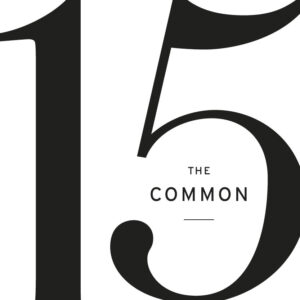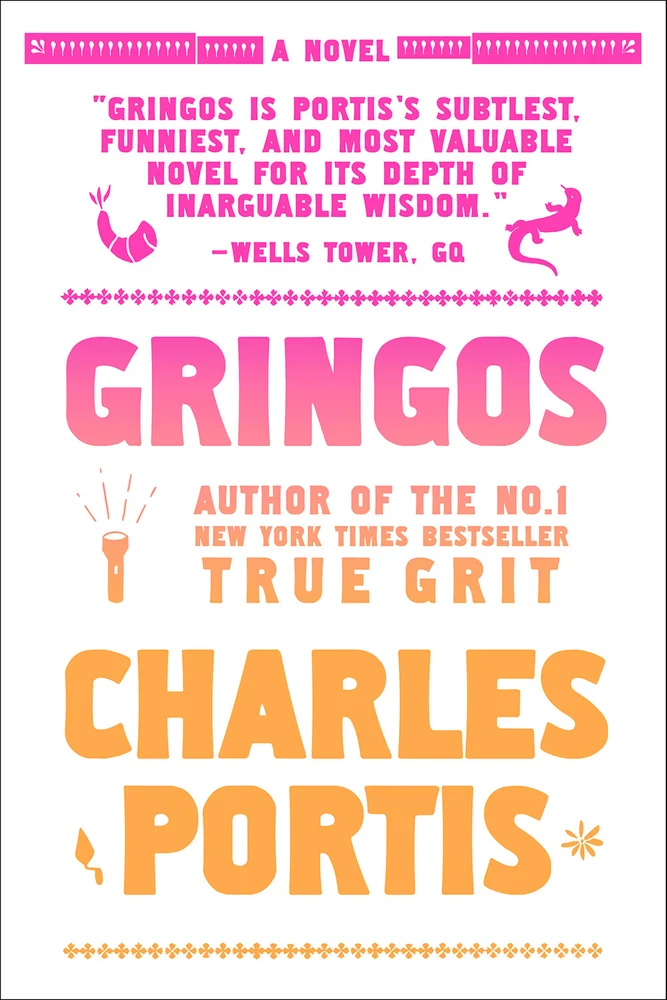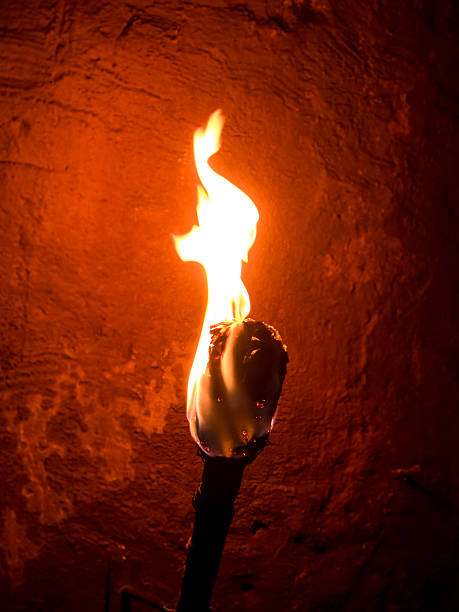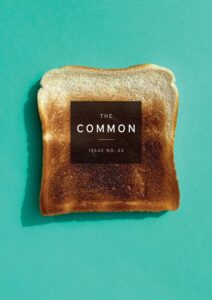By TED CONOVER

The Reading Life is a special 15th-anniversary essay series reflecting on close reading and re-reading, written by The Common’s Editorial Board.
In seventh grade English class, I read a poem in an anthology that felt custom-written for me. “It’s Raining in Love” captured almost perfectly an anxiety that I, at 13 years, felt practically every day: how to talk to a girl. The first lines are all about the speaker, worrying about the right things to say, but then it shifts to the girl’s perspective and finally this ending:
if a girl likes me a lot
and starts getting real nervous
and suddenly begins asking me funny questions
and looks sad if I give the wrong answers
and she says things like,
“Do you think it’s going to rain?”
and I say, “It beats me,”
and she says, “Oh,”
and looks a little sad
at the clear blue California sky,
I think: Thank God, it’s you, baby, this time
instead of me.
Never had a grown-up captured my feelings so succinctly, so I made note of the name of the author, Richard Brautigan.
Sometime later my father, a lawyer who read books in the morning before he left for work, came home with a slender paperback novel titled In Watermelon Sugar. The bottom third of the cover was taken up with a quote that is the novel’s first sentence: “In watermelon sugar the deeds were done and done again as my life is done in watermelon sugar.” The top two-thirds was a photo of a man with long, frizzy, blond hair and a prominent mustache sitting right behind a woman with straight dark hair; he is looking roughly at the camera but she is not. He was the author, Richard Brautigan. I immediately sat down to read.
It seemed to me the most mysterious, imaginative thing I had ever come across. The narrator, in language as simple as the poem I had read, describes life in a small community where people live in wooden shacks and gather together for meals. There are statues of vegetables and the sun shines a different color every day; trout live in creeks that also feature glowing tombs. A handful of mysterious names and phrases are used as if every reader would know what they mean. Such as “watermelon sugar,” which the community makes and can be used to build things but is never explained. Much of the story is quite accessible, such as the narrator’s new crush on Pauline, whom he sleeps with every night, and also the upset of his ex, Margaret, who wants to talk to him but whom he avoids. Much is bucolic (fields of lettuce and watermelons, Chuck who lights lanterns at night on the “real bridge and the abandoned bridge”) but also there are scary things, such as tigers (who we learn offhand “ate my parents”) and a drunken gang that lives in a frightening, out-of-bounds area called The Forgotten Works.
I was fascinated by the way Brautigan wasn’t worried about everything making sense, and by his picture of sunny communal life in a setting that was apparently postapocalyptic. I mentioned the book to my friend Jay. Soon Jay had also read In Watermelon Sugar and in addition had bought Brautigan’s first novel, Trout Fishing in America. Brautigan looked like a hippie, and I should add that Jay had long hair; he and I understood that the book was in some way a product of countercultural currents sweeping the country, of a pushing back against norms and straightness. The Bay Area, where Brautigan lived, seemed the epicenter of a national moment of experimentation—new music, new clothes, new sexual attitudes, new language. Reading Brautigan let us participate in all that in some way, from our junior high school in Denver.
Brautigan eventually published nine volumes of poetry, two story collections, and nine more novels. I bought many of these, particularly the novels. The most famous of these, and his greatest commercial success, selling two million copies worldwide, was Trout Fishing in America (1967). Billed as a novella, it’s more a collection of vignettes, linked by recurring characters, one of them named Trout Fishing in America. Trout fishing, the activity, is also mentioned. But I found the randomness and whimsy that presumably enchanted its early readers to be annoying and even excruciating. There was little plot to speak of, no character development, and the book ended, inscrutably, with a chapter on mayonnaise, ha ha. After having tried to finish the book at least three times but never making it to the end, I’ve wondered how much of the book’s success can be attributed to the ironic title, to “straight” book buyers of the hippie era wanting in on the countercultural joke.
But I kept reading. After In Watermelon Sugar came The Abortion: An Historical Romance 1966, published in 1968. It had parts that I really loved, particularly the beginning, where the narrator describes his job as sole employee of an unusual library that appears to be more about taking books in than lending them out. The donors are all kinds of writers, and rather than serving as some sort of literary gatekeeper, the narrator of The Abortion takes delight in everything people bring in. The first book to be mentioned arrives at 3 a.m. and has been brought by an “eighty-year-old lady” who started walking to the library at midnight, when she finished writing it.
“I would’ve gotten here sooner if I weren’t so old.”
“Where do you live?” I asked.
“The Kit Carson Hotel,” she said … Then she handed it proudly to me as if it were the most precious thing in the world. And it was.
The label, written in green crayon, read GROWING FLOWERS BY CANDLELIGHT IN HOTEL ROOMS, BY MRS. CHARLES FINE ADAMS.
Some other titles people brought to the fictional library:
LEATHER CLOTHES AND THE HISTORY OF MAN by S.M. Justice. The author was quite motorcyclish and wearing an awful lot of leather clothes. His book was made entirely of leather. Somehow the book was printed … When the author turned the book over to the library, he said, “I like a man who likes leather.”
HE KISSED ALL NIGHT by Susan Margar. The author was a very plain middle-aged woman who looked as if she had never been kissed.
HOMBRE by Canton Lee. The author was a Chinese gentleman about seventy.
IT’S THE QUEEN OF DARKNESS, PAL by Rod Keen. The author was wearing overalls and had on a pair of rubber boots. “I work in the city sewers,” he said, handing the book to me. “It’s science fiction.”
THE EGG LAYED TWICE by Beatrice Quinn Porter. The author said this collection of poetry summed up the wisdom she had found while living twenty-six years on a chicken ranch in San Jose. “It may not be poetry,” she said. “I never went to college, but it’s sure as hell about chickens.”
One night a woman turns up with a book “that had a plain brown wrapper on it and there was no title. The book looked like a stark piece of ground burning with frozen heat.” When the narrator asks what it’s about, she says “it’s about this” and dramatically flings open her coat to reveal a voluptuous body “that would have made the movie stars and beauty queens and showgirls bitterly ooze dead make-up in envy.” “I hate it,” she says. “It’s too big for me. It’s somebody else’s body. It’s not mine.”
These days an author might use the word dysmorphia, but Brautigan never would (he didn’t go for big words). These days a narrator might interrogate the woman feeling uncomfortable about her body with sympathy, as Brautigan’s librarian does. But these days that librarian would not end up in bed a short time later with that woman, the one with “the large breasts, the tiny waist, the large hips, the long Playboy furniture legs,” as Brautigan’s narrator does. As a libidinous teenager circa 1970, I was not much troubled by this. But I was puzzled about the remainder of the book—its greater part—which involves the librarian procuring a $200 abortion in Mexico for the woman after she becomes pregnant. It’s right there in the title but nevertheless, to this day it strikes me as sad and odd, an extended somber denouement to a story which begins with whimsy, bigheartedness, and a lot of sex.
Fast forward to college, where I had a heavy reading load of books that were not whimsical and sexy but rather were Literature. I wanted this, as my public-school education had not been rigorous and there were large gaps in my knowledge. But when I heard that Brautigan had published a new novel, The Hawkline Monster: A Gothic Western, I ordered it and saved it as a treat to be savored over spring break, which I would spend at my grandparents’ condo in Naples, Florida.
That was more than 45 years ago and until last month, I hadn’t read The Hawkline Monster since. But I still remembered the pleasure of opening the book and starting to read, as though jumping into a literary comic book. And I remembered some details from the story, such as a character, a cowboy from eastern Oregon, who has the habit of compulsively counting things (though again, Brautigan would never use the word “compulsively”)—the number of times he throws up on an ocean voyage (20), the number of gunshots he hears in the distance (six), the number of hills he rides by on horseback (57), the number of bullet holes in a cross (nine), the number of times he chews his food (5,000). I remembered that it also had beautiful, available young women (sisters, in this case) with one of whom the two cowboys have fulfilling sex. My grandfather, a retired geologist then in his 80s, must have noticed how avidly I was tearing through the book because he asked me about it. The next day, to my enduring mortification, I walked into his study and found him reading it. I was afraid to ask what he thought about it, and he never brought it up.
After that, the novels were less good. Willard and His Bowling Trophies told the tale of three brothers from Idaho obsessed with finding the person who stole their cherished bowling trophies. The “Willard” of the title is a large papier mâché sculpture of a bird that happens to be in the same San Francisco apartment as the trophies. It’s a little bit alive (one might say “sentient,” but again, Brautigan never would). There is, once again, a beautiful naked woman, Constance, who has been tied to a bed in a neighboring apartment by her boyfriend, Bob. His need for bondage play strains their relationship, as do her venereal warts, which he doesn’t want to get. The humor and playfulness of earlier work are here absent, as well as the sense of being in the hands of a writer who sees the world in a fascinating new way. When I got to the end I pretty much decided I was done with Brautigan.
But hope dies hard when there’s an author you’ve loved. In later years I picked up Sombrero Fallout (1976) and Dreaming of Babylon (1977). Brautigan would often attach a genre to his titles (“historical romance,” “gothic Western,” “Japanese novel”) but only Dreaming of Babylon, “a private eye novel 1942” hewed somewhat closely to the conventions of a genre. It was noir: a glamorous, blonde mystery woman and the tough driver of her limousine; a corrupt, hard-bitten cop; a missing corpse; a down-at-the-heels private eye hoping to make a score that will change his life. But the plot is meandering and crazily convoluted; when it wrapped up I felt mainly relief.
Brautigan killed himself in bucolic Bolinas, California in 1984, at age 49. My Denver friend Jay later lived in Bolinas for a few months after college. I visited him there, and we both wondered whether it might have partly inspired In Watermelon Sugar, which Jay recalled as “magical, kind of idyllic and dreamy.” A part of that, we knew, was not just the world Brautigan evoked but the language he used. Simple might be the first word that comes to mind … but I remember Jay, who is also a writer, observing that you could not achieve Brautigan’s effect just by writing in a straightforward fashion, avoiding long sentences and big words. The style was singular, deceptively hard to describe or copy. The critic John Ciardi wrote that Brautigan “manages effects the English novel has never produced before.” A young-adult author named David Bristow, discovering Brautigan years later via Wikipedia, would add in an essay, “there’s something about his off-kilter view of the world that subtly alters your own.”
So much to admire. And yet, as with so many novels of the last century, especially by men, so much to make today’s reader squirm. Almost all of Brautigan’s novels feature a not-physically-described male character having sex with a voluptuous woman. One could argue that explicit depictions of sex equaled rebellion at the time, like Swedish porn or dancing topless at Woodstock, a countercultural push against “uptightness.” But no noble impulse can be ascribed to the early chapter of Brautigan’s first novel, A Confederate General from Big Sur (1965), where he introduces his picaresque hero, a dissolute, sort of down-market Dean Moriarty figure:
I met Lee Mellon five years ago in San Francisco. It was spring. He had just “hitch-hiked” up from Big Sur. Along the way a rich queer stopped and picked Lee Mellon up in a sports car. The rich queer offered Lee Mellon ten dollars to commit an act of oral outrage.
Lee Mellon pretends to go along then bashes the guy in the head with a rock, robs him, and steals his car. The narrator finds it kind of funny.
Brautigan began publishing in the mid-1960s, at sort of an overlap moment between the Beats and the hippies. Before that, he had grown up in Oregon, where he was sent to the state mental hospital soon after turning twenty, receiving treatments including electroshock therapy for paranoid schizophrenia and depression. When I look now at my pile of his books, I think about his strange and wondrous mind. I admire the way he tried new things, his experiments with language and voice, his quirky ideas. I feel badly about his evident difficulty at finding happiness in this world. And I feel badly about the way his books haven’t aged that well. That’s true both for me personally (not a teenager anymore!) and for the larger culture, now more multifarious and less interested in literary oddities, even when they show flashes of genius.
As I began writing this essay, I thought I might try one more time to get through Trout Fishing in America. That was when I discovered it was no longer in my pile—my dozen titles by Brautigan did not include his most famous work. I must have given it away or thrown it out. In other words, of his many books that I never looked at anymore, I had successfully gotten rid of only one. I’m not going to second-guess that decision today; all of us have limited shelf space and need to make choices about what books to keep. To me the test should be: is this something that made a lasting difference to me and that I might want to read again? If not, then it should go. In Watermelon Sugar and The Abortion, I will keep.
Ted Conover is the author most recently of Cheap Land Colorado: Off-Gridders at America’s Edge, named one of The New Yorker’s best books of 2022. Newjack: Guarding Sing Sing, an account of his ten months spent working as a corrections officer at New York’s Sing Sing prison, won the National Book Critics Circle Award and was finalist for the Pulitzer Prize. Conover’s first book, Rolling Nowhere: Riding the Rails with America’s Hoboes, grew out of his undergraduate thesis research at Amherst. His work has twice been an answer on “Jeopardy!”




